(All information of the topic was obtained from the internet)
13.1 Limitation of traditional electronic communication and computation
Designs of electronic computation is based on the mathematical treatment of binary Boolean algebra and electronic logical gates, operating with (0 1) binary bit coding programming (software) and decoding devices (hardware). A high voltage of 5V is given a state of 1 and a low voltage of 0V a state of 0. A binary 2 bit of (0 1) has 22 possible states, i.e. (0 0), (0 1), (1 0) and (1 1). A binary 4 bit has 24 possibilities, a binary 8 bit has 28, a binary 16 bit 216 possibilities etc. Today’s PC can compute 64-bit data width signals. Revise Topic 9.2 for refreshment. Speed of computation depends mainly on two factors: (i) data transmission rate and (ii) computation rate. Supercomputers used in simulating nuclear fission or AI big data treatment have speeds attaining tetra (1012) times per second or more with infrastructure of over 10 million CPUs.
The fundamental step of electronic computation is the switching on/off of a logic gate which consumes tiny amount of time and power. The process is irreversible and straight forward as propagation of data signal is one-way only. 0 is 0 and 1 is 1, only one state is allowed, 0 and 1 cannot coexist at the same time. Even with the rapid advancement involving holistic integration of nano-technology, superconducting graphene materials (hardware) and massive binary broad bit width data bus transfer (software), speeds of computation cannot be infinitely fast. The bottle neck being the time taken to change one state to another, (0 to 1) or (1 to 0). Although the time taken can be extremely small, it is practically impossible to zero it.
Electronic computation also faces data encryption and virus plantation problems.
13.2 Quantum communication and computation
(i) Quantum communication
The modulated carrier wave of cable or wireless electronic communication is electromagnetic wave. Emitter and receiver will share the same modulated data signal. If the emitted signal is encrypted, the receiver, even though lacks the corresponding deciphering tool, can still find a means to decipher the encrypted data, based on the simple fact that what one can do, others can also, with finite probability, do it as well. Hence encrypted data is not 100% safe. If the level of encryption is increased, chances of successful deciphering will decrease.
Quantum communication does not need carrier wave. Quantum communication is based on the quantum entanglement of photon. Photon, unlike electromagnetic wave, is a kind of fundamental particle, possessing basic atomic properties like self-spinning and uncertainty. Relocation of photon, unlike electromagnetic wave, has no wavelength or time variation limit (f = vel. of light/wavelength) and reappearance of photon is directional and instantaneous in terms of speed of light, like “Time travel by time machine”. The way to undergo quantum communication is to dismantle the data-entangled photon beam and emit one to a pre-determined position. If a pair of entangled particles is generated such that their total spin is known to be zero, and one particle is found to have clockwise spin on a first axis, then the spin of the other distant particle, measured on the same axis, will be found to be counterclockwise. In this way, encryption is perfect as the encrypted and deciphered codes are in your hands only.
Information gathered from the internet about quantum communication can be focused by the following points:
(i) unlike digital electronic data modulated e.m. wave communication which physically involving either 5V (1 state) or 0V (0 state), 1 state and 0 state of quantum communication can coexist at the same time by quantum superposition, specific state is uncertain, can be 0 state or 1 state;
(ii) the practical implementation of quantum communication is by using quantum entanglement;
(iii) encrypted code theoretically cannot be deciphered;
(iv) quantum communication network will have 0 second latency, speed of communication and terrestrial distance are not related and
(v) point to point communication.
In 2016 China launched the “Micius” quantum satellite (墨子號量子科學實驗衛星) and achieved long distance terrestrial-space-terrestrial quantum communication.
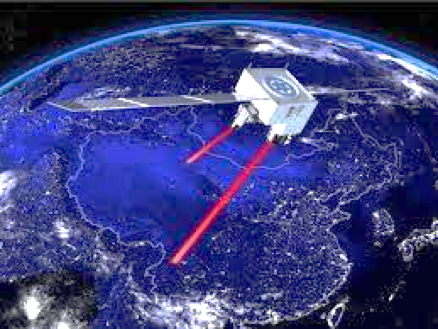
(Fig. 349) 1200 Km quantum entanglement communication successfully completed by China’s “Micius” quantum satellite
For the time being, development of practical quantum communication is still ongoing, real time implementation theory is beyond author’s cognitive ability. Some information may be obtainable from the internet, but the technical details are never disclosed because of top military security. If you like, you can picture quantum communication as fictitious “time travel” by a time machine, as opposed to conventional point to point travel by a vehicle.
(ii) Quantum computation
Will electronic digital mobile communication and computation experience another breakthrough after 50 years of great leap forward? Frankly speaking, the room for further improvement is limited, because the bottle-neck i.e. the time taken for logic gates to switch on and off cannot be offset to zero by decent technology (excluding the use of superconductivity). Naturally, one would think of a possible way is to do away with the 0/1 OFF/ON switching logic gate mechanism operating on either the 0 state or the 1 state. Exactly, scientists are now eyeing on a new direction of computation technology – quantum computation.
Quantum computing is still in the rudimentary stage, theory and practice (including prototype usage, consumer/commercial/military applications) are at a far distance apart. As its name implies, quantum computation is based on the quantum concept which was built on the “Principle of uncertainty”. Concept of electronic digital computation is based on a propagating square wave signal of 5 V amplitude activating the relevant logic gates of the hardware architecture through executing the imported program according to precise timing of changing 0 state (0 V) to 1 state (5 V) or vice versa. In other words, 0 and 1 states are physically real, discrete and not related.
On the contrary, according to the Uncertainty Principle, the operating states of quantum computation, if sticking to 1 and 0 states, are real time uncertain. There is no need for the input and output states to depend on a propagating signal wave media, and the process is based on linear combination of the eigenstate of the spin or polarization of photons or electrons, resulting in superpositions of all kinds of transformation expressed in complex as well as real numbers. 0/1 superposition transform is orthogonal (i.e. not related) and computation not only can carry out in the 0 state or the 1 state but also other (0/1) superposition states, a situation which is totally different from conventional electronic computation which is based on the transition from the 0 state to the 1 state or vice versa. This quantized bit is called “Qubit”, as opposed to the 0/1 binary bit.
Unlike electronic digital binary 2 input 2-bit data in which each logic gate can operate on only one state of (0 0), (1 0), (0 1) or (1 1), a quantum computer with “2-Qubit” data input, however, can undergo at the same time 22 or 4 operations of all such states. A 64-bit byte PC can in theory perform 264 or 1.84 x 1019 computations. However, binary digital data is grouped into bytes and words which means, say can handle 4 words at the same time, the actual number of computations is far far less than 264 times, let alone the factor of limitation by hardware’s clock speed. The computation speed of a quantum computer is given by 2n Qubit. A 50-Qubit quantum computer can actually undergo 250 or 1.13 x 1015 times of computation at the same time. It is recognized that a standard cost-effective quantum computer should manage to handle at least 50 Qubit, small double qubit error and be equipped with interference-free device to prevent data loss.
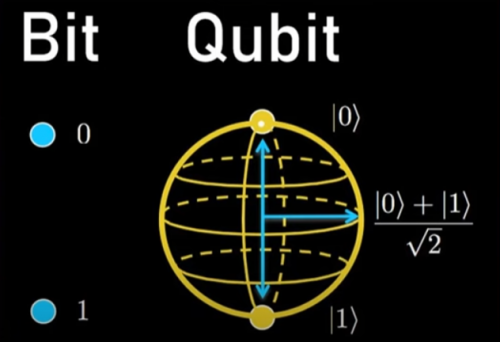
Electronic bit and quantum qubit
An introduction to quantum computing
The mathematics of quantum computers
In 2011, the Canada based “D-Wave System Inc.” disclosed the world’s first commercial quantum computing system “D-Wave One” using the “Quantum annealing” technology. NASA and Google announced “D-Wave Two” shortly afterwards. However, performance of the two machines fell short of expectation in exceeding a traditional electronic computer. In 2019, IBM announced the world’s first commercial quantum computer “Q System One” (Fig. 350). The machine was too bulky for general use. Also, low temperature superconductivity was required and the 20-Qubit computing capacity was a lot less than a decent commercial demand of more than 50-Qubit.
Some details of quantum computing terminologies such as “Quantum Supremacy”, “Quantum Advantage”, “Photon Boson Sampling” and “Superconducting Qubit Sampling” are obtainable from the internet. It appears the last two methods are currently adopted for pioneering experimental quantum computation development.
Postscript (from the internet): As of 2020, the quest for “Quantum Supremacy” has been being challenged by two prototypes of quantum computing systems built on the “Superconducting Qubit Sampling” and the “Photon Boson Sampling” technological devices.
(i) In 2019, the “Sycamore” computing system of Google employing the “Superconducting Qubit Sampling” technique tackled a task-oriented problem of sorting a likely outcome from a quantum version of random number generator by using a 53 Qubit processor and excelled that of the fastest traditional supercomputer boosted at its highest speed. Google won the first round of the “Quantum Supremacy”
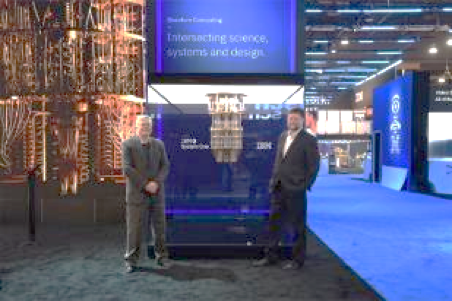
(Fig. 350) 2019 IBM “Q System One”
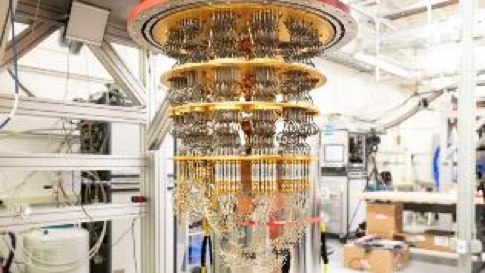
(Fig. 351) The “Sycamore” quantum processor
Demonstrating quantum supremacy
(ii) In 2020, the team headed by Prof. Pun and Luk of the University of Science and Technology of China used the “Photon Boson Sampling” technique and built the “Jiuzhang (九章)” (Fig. 352) quantum computing prototype. Unlike the “Sycamore” which operates at absolute zero Kelvin (0 K, or -273oC), only the photon detection part of “Jiuzhang” needs an environment of 4 K or -269oC, the rest operates at room temperature. The targeted task was different from that of Google’s “Sycamore”. “Jiuzhang” used 76 photon sampling and finish a specific task much faster than the world’s fastest supercomputer “富岳(Fugaku)” of Japan. This also exceeded the speed recorded by “Sycamore”. Thus, “Sycamore” and “Jiuzhang” exchanged hands in the quest for “Quantum Supremacy”.
Demonstrating quantum supremacy
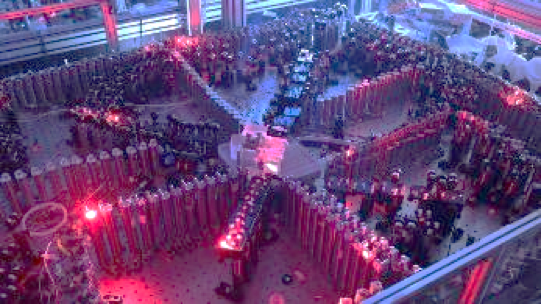
(Fig. 352) The “Jiuzhang” quantum computing prototype
(iii) In 2021, the team of Prof. Pun also pioneered the “Superconducting Qubit Sampling” technique and announced a prototype of dual particle (Cooper pair, electron pair of opposite spin at 0 K acting as a single entity, “spin-singlet”, behaving like a boson, internet search) programmable 62 Qubit processor “祖冲之號”.
“Jiuzhang” achieved quantum supremacy

(Fig. 353) The “祖冲之號”quantum computing prototype
Compared with the more commercially matured Google’s “Sycamore” 53 Qubit processor, “祖冲之號”needs more development in order to claim “Quantum supremacy” in the field of superconducting Qubit sampling quantum computing.
(iv) Qiskit: Qiskit is an open-source software development kit (SDK) for working with quantum computers at the level of conventional circuits, pulses and algorithms. It provides tools for creating and manipulating quantum programs and running them on prototype quantum devices. The initial version used Python programming language but was shortly changed to more open-source code versions basically not standardized, primarily because of available commercial quantum computers are still at developing stage.
(v) The two quantum computing prototypes as described above used different techniques and therefore acquired “Quantum Supremacy” claims of different areas. The ultimate challenge of the quest for quantum computing appears to be looking for a practical and stable machine which can undergo quantum algorithm problem solving and accept programmed coding for quantum computation. The expected paramount functional quantum computer will replace traditional electronic logic-gate based supercomputer, simulating nuclear fission, nuclear fusion, molecule dynamics (drug innovations), AI blockchain, code encryption and cracking etc, situations in which computation rate in the order of quintillion (1018) times per second is required. It is also expected that the chance of quantum computation occupying a place for consumer use may be realistic at least for decades to come.
13.3 Topic summary
Binary Boolean algebra opened up the electronic logic bit development and hence electronic digital computation technique. It was regarded as an overwhelming success of STEM. Could the advancement of Qubit development based on Quantum Mechanics and Linear Algebra be developed as practical quantum computers? If so, we are sure to foresee another even bigger achievement of STEM after the electronic digital computation technique.
An overall brief summary of electronic communication and computation vs quantum communication and computation:
| Communication technique | Computation technique | ||
ELECTRONIC | * Landline and wireless communication, techniques were fully developed. * Switching of landline analogue copper cable to digital broadband optical fibre facilitated fast “people to information” communication and established the outstanding world-wide network of internet. * Wireless digital communication technology developed from 2G to nowaday’s 5G. * Future 6G communication will mainly aim at big data transmission, AI applications and Internet of Everything (IoE). | * Since the 60s of last century, consumer and industrial use of electronic digital hardware and software had been widely practised. * Computing capacity of electronic digital computer depends on speed and size of memory. Development of the latter experienced a great leap forward according to the “Moore’s law”. The rise of “Flash memory” enabled a micro-SD card to store up to hundreds of GByte. * Today’s popular smartphones were benefitted from the advancement of mobile hardware and software. Their functional capability is even more superior than that of desktop PCs. | |
QUANTUM
| * Theory and practice are still in the developmental stage.
* Up till now, the only practical method of distant quantum communication is by quantum entanglement,
* Encrypted quantum communication data theoretically cannot be deciphered. | * Theory and practice are still in the embryonic stage. Logic gate approach may not be used in quantum computation. However, compatibility with currently large-scale usage of electronic computing based on logic gate operations seems an economic necessity. Binary bit and qubit should advance hand in hand. * Hardware and software of superconducting Qubit quantum computers are available only for the commercial sector. Domestic use of quantum computer is still an unknown with no foreseeable future. * Degree of efficiency of quantum computer and electronic computer are not of the same level. Quantum computer greatly exceeds electronic computer in all aspects of characteristics. |
Postscript: In Jan 2022, three separate papers published in the Journal of Nature: (i) Precision tomography of a three-qubit donor quantum processor in silicon⌋ Nature , (ii) Quantum logic with spin qubits crossing the surface code threshold⌋ Nature , and (iii) Fast universal quantum gate above the fault-tolerance threshold in silicon⌋ Nature unfolded researchers are targeting using silicon substrate based mechanism for quantum computation purpose. The endeavour paved the way for the third approach of quantum computation other than the exploring “photon boson sampling” and the “superconducting qubit sampling” techniques.
13.4 An affordable beginner’s level quantum computer – SpinQ Gemini
In 2022, Shenzhen China rolled out a commercial mini quantum computer, SpinQ Gemini, which is very suitable for beginners to understand and apply the basic principles of quantum computing.
The machine uses well established NMR (nuclear magnetic resonance) technique to manipulate the nuclear spins of 1H and 31P to achieve a 2 qubit quantum computing platform. Basic theory and construction details are fully outlined by the following article: SpinQ Gemini: a desktop quantum computing platform for education and research | EPJ Quantum Technology | Full Text (springeropen.com).
YouTube presentation:
